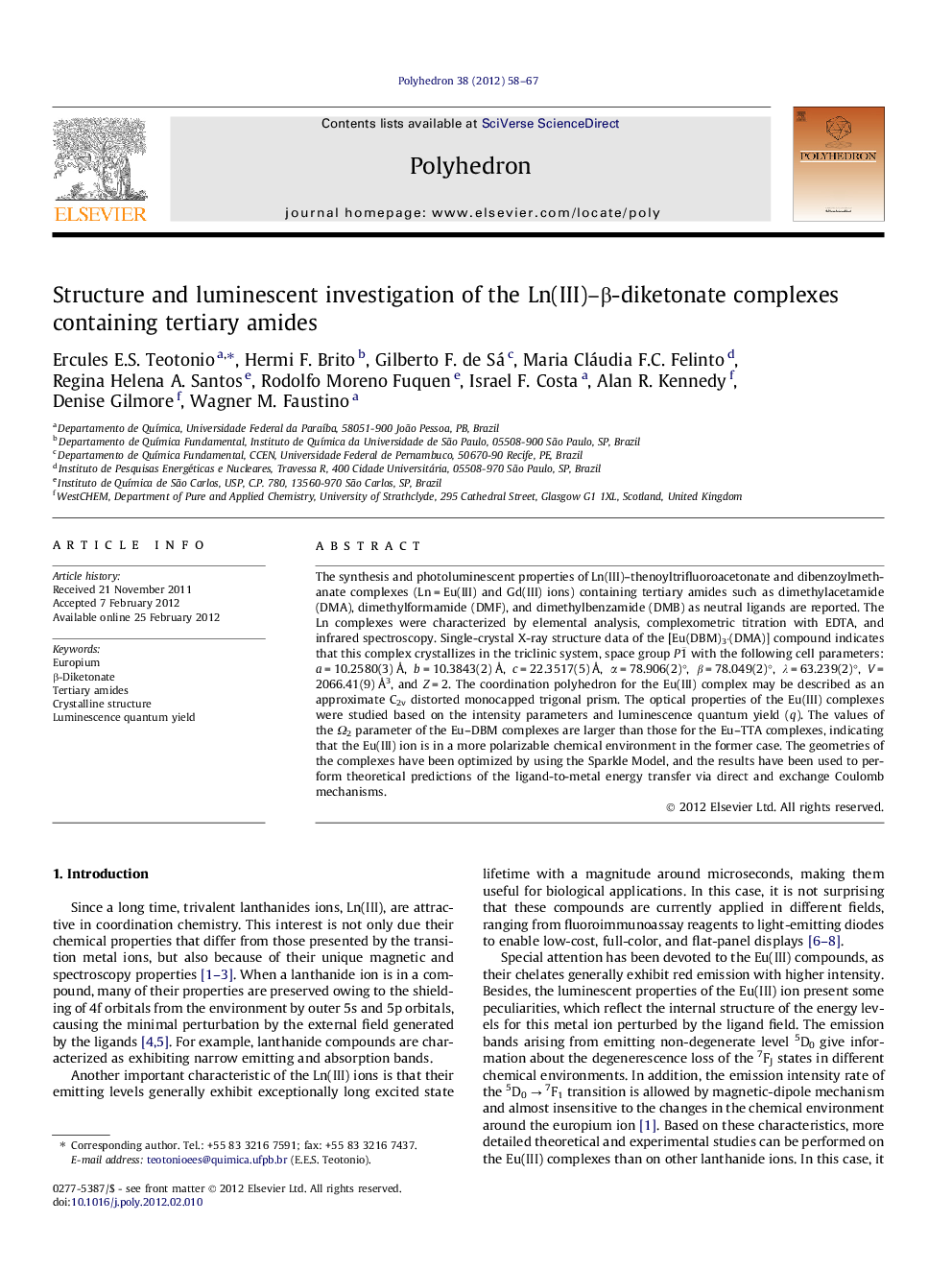| Article ID | Journal | Published Year | Pages | File Type |
|---|---|---|---|---|
| 1337658 | Polyhedron | 2012 | 10 Pages |
The synthesis and photoluminescent properties of Ln(III)–thenoyltrifluoroacetonate and dibenzoylmethanate complexes (Ln = Eu(III) and Gd(III) ions) containing tertiary amides such as dimethylacetamide (DMA), dimethylformamide (DMF), and dimethylbenzamide (DMB) as neutral ligands are reported. The Ln complexes were characterized by elemental analysis, complexometric titration with EDTA, and infrared spectroscopy. Single-crystal X-ray structure data of the [Eu(DBM)3·(DMA)] compound indicates that this complex crystallizes in the triclinic system, space group P1¯ with the following cell parameters: a = 10.2580(3) Å, b = 10.3843(2) Å, c = 22.3517(5) Å, α = 78.906(2)°, β = 78.049(2)°, λ = 63.239(2)°, V = 2066.41(9) Å3, and Z = 2. The coordination polyhedron for the Eu(III) complex may be described as an approximate C2v distorted monocapped trigonal prism. The optical properties of the Eu(III) complexes were studied based on the intensity parameters and luminescence quantum yield (q). The values of the Ω2 parameter of the Eu–DBM complexes are larger than those for the Eu–TTA complexes, indicating that the Eu(III) ion is in a more polarizable chemical environment in the former case. The geometries of the complexes have been optimized by using the Sparkle Model, and the results have been used to perform theoretical predictions of the ligand-to-metal energy transfer via direct and exchange Coulomb mechanisms.
Graphical abstractThe synthesis and photoluminescent properties of Ln(III)–thenoyltrifluoroacetonate and dibenzoylmethanate complexes (Ln = Eu(III) and Gd(III) ions) containing tertiary amides are reported. Single-crystal X-ray structure data of the [Eu(DBM)3.(DMA)] compound indicates that this complex crystallizes in the triclinic system, space group P1¯. The optical properties of the Eu(III) complexes were studied based on the intensity parameters and luminescence quantum yield (q). The geometries of the complexes have been optimized by using the Sparkle Model, and the results have been used to perform theoretical predictions of the ligand-to-metal energy transfer via direct and exchange Coulomb mechanisms.Figure optionsDownload full-size imageDownload as PowerPoint slideHighlights► Molecular structure of the [Eu(DBM)3(DMA)] complex was determined. ► The geometries of the europium complexes have been theoretically optimized. ► Intramolecular ligand-to-metal energy transfers have been investigated. ► Optical properties of the Eu(III) complexes were investigated. ► Intensity parameters and luminescence quantum yield (q) have been determined.
